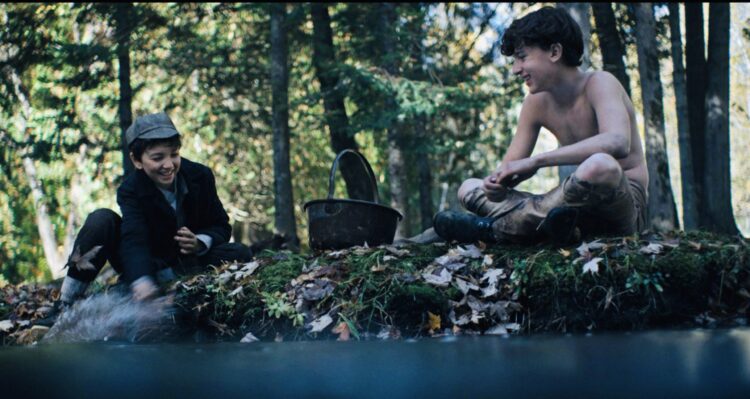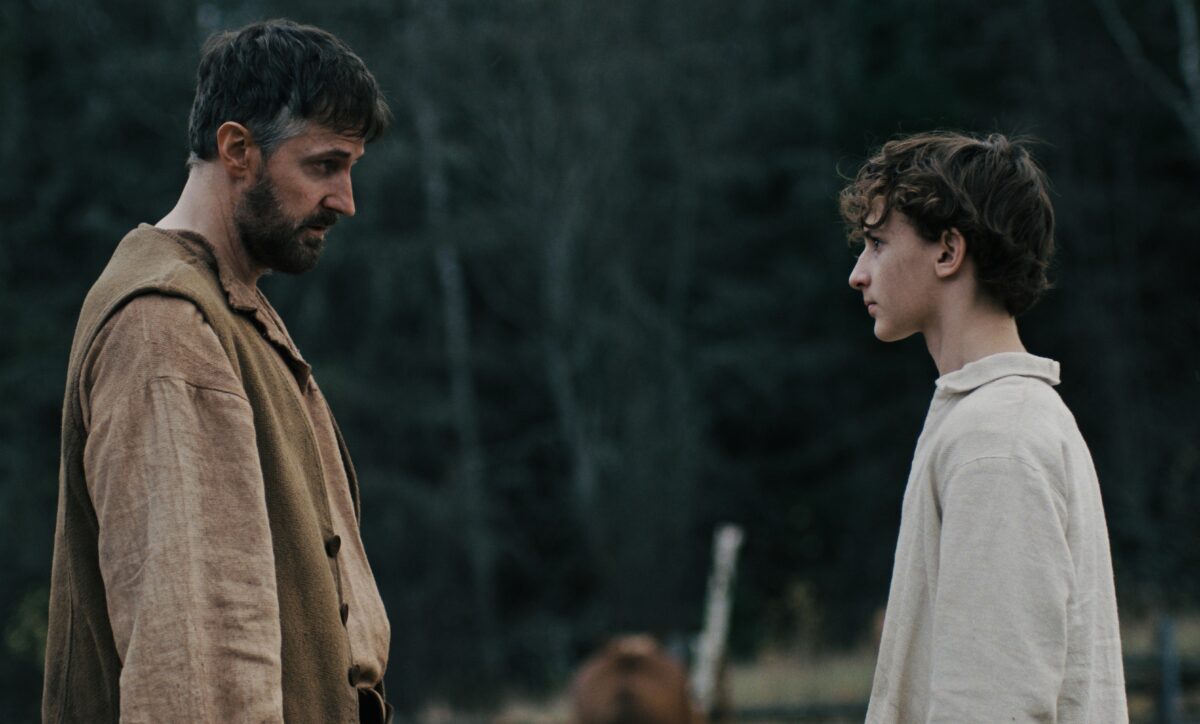Strength of character, resilience and courage were often the hallmarks of Holocaust survivors. These were the vital qualities that enabled them to overcome daunting disadvantages and challenges. Oziac Fromm was one such survivor. Left to fend for himself at the tender age of twelve, following the murder of his parents and sister, he survived for nearly a year in a remote forest in eastern Poland.
Rebecca Snow’s feature film, The Boy in the Woods, is based on Fromm’s memoirs and recounts his experiences with sensitivity and elan. Now playing in theaters in south Florida, it is a story of survival against all odds during one of the darkest periods of the 20th century.
It is dedicated to the 1.1 million Jewish children who perished during the Holocaust.
Fromm immigrated to Canada in 1948 under the auspices of the Canadian Jewish Congress and became an artist and a businessman. During the postwar period, he anglicized his name to Maxwell Smart, after a famous television personality. In Snow’s Canadian film, which was shot in northern Ontario, he is variously known as Max and Stashek.
Max was raised in Buczacz, a town in Poland now in Ukraine whose Jewish population was decimated during the German occupation.

As his family was ruthlessly rounded up by the Nazis in 1943, his mother encouraged him to escape and save himself. As he headed toward a nearby forest, Max (Jett Klyne) ran into his aunt, who directed him to Jasko (Richard Armitage), a friendly farmer willing to help. Klyne and Armitage acquit themselves remarkably well in portraying these individuals.
Jasko renamed Max, calling him Stashek, a typical Polish name. He also put him to work. It seemed as if Max would not be a problematic visitor. But after a policeman came calling, looking for Jews in hiding, Jasko panicked and asked Max to leave, knowing that the death penalty was applied to Poles who assisted Jews.
However, Jasko did not leave Max high and dry. He led him to a simple shelter deep in the woods, a dugout covered with twigs, boughs, soil and grass, and gave him a knife and a small canvas sack full of food. From that point onward, Max was entirely on his own in a decidedly hostile environment.
The film conveys his palpable fear and gnawing uncertainty and underscores the dangers he faced from local antisemites on the hunt for Jews.
During a quiet interlude, he met Yanek (David Kohlsmith), a younger Jewish boy on the run, and offered to protect him.
While foraging for food, Max was caught by a policeman, but a sympathetic woman saved him from certain death. As these scenes unfold, feel-good flashbacks of Max’s mother and himself recur.

After they were pursued by two “Jew hunters” wielding rifles, Max thought that the end was near, momentarily succumbing to depression.
In another scene, Max and Yanek stumbled upon the bodies of several civilians who had just been shot near a river bank. There they found a live baby swaddled in a blanket. As the war wound down, Max encountered a band of Russian partisans. Later, he handed the baby over to Jasko and his wife.
Having been liberated in 1944, Max, an orphan, immigrated to Canada in 1948 and settled in Montreal. (He appears to have arrived in Halifax on the same ship that brought my parents and myself to Canada in the winter of that year).
The Boy in the Woods, a workmanlike production, is a testament to the spirit of survival that animates all of us, especially under dire circumstances.
